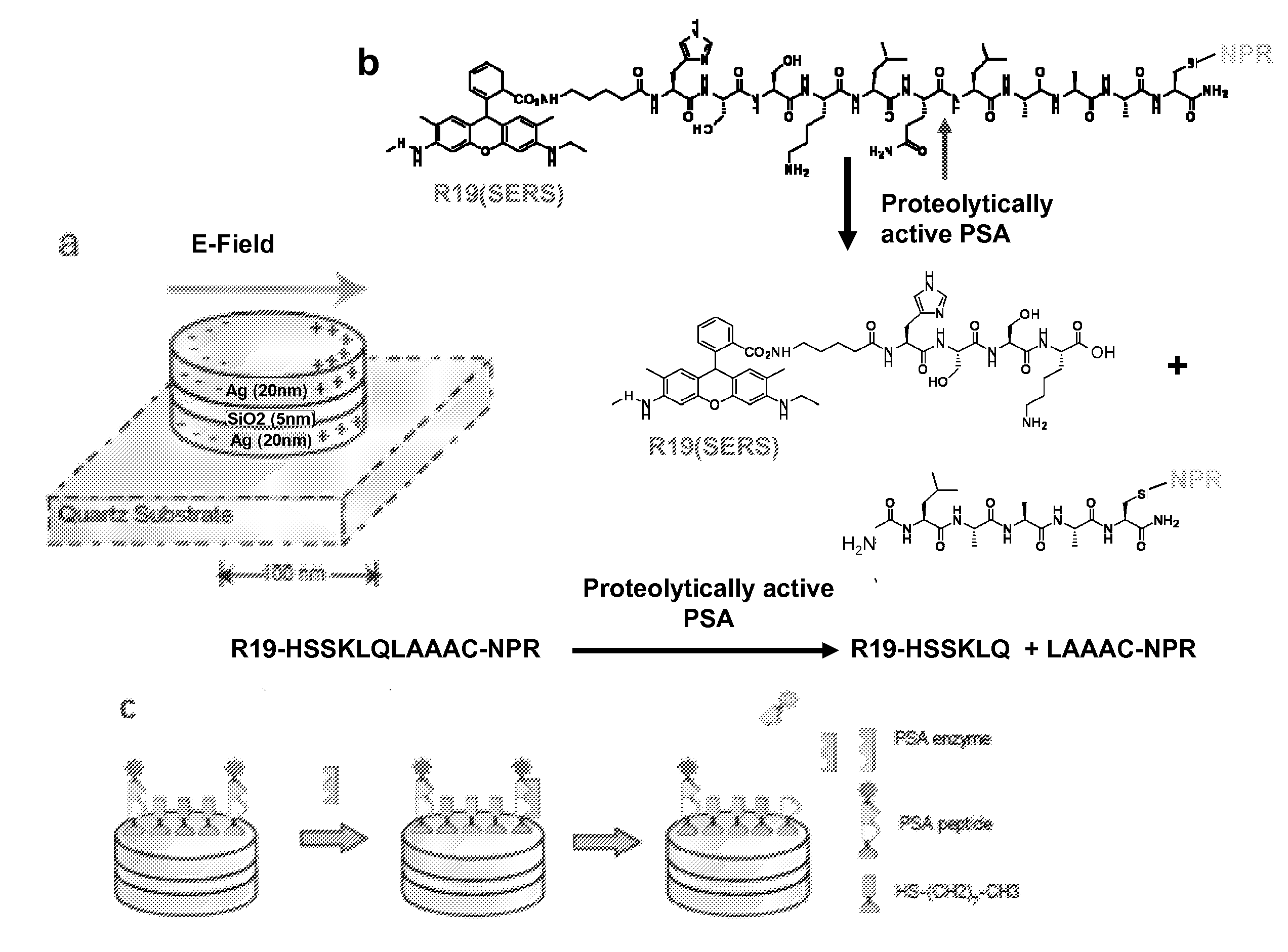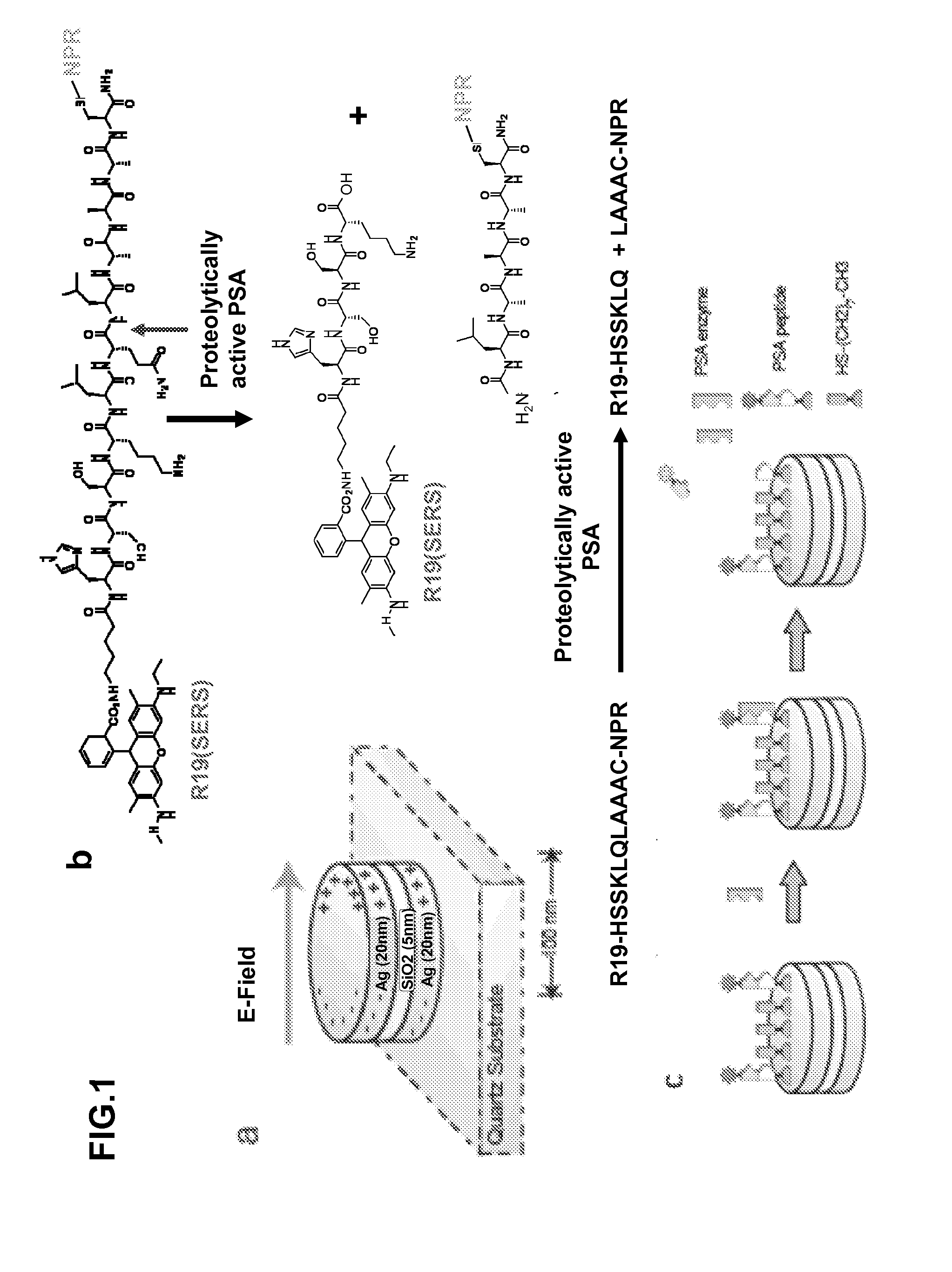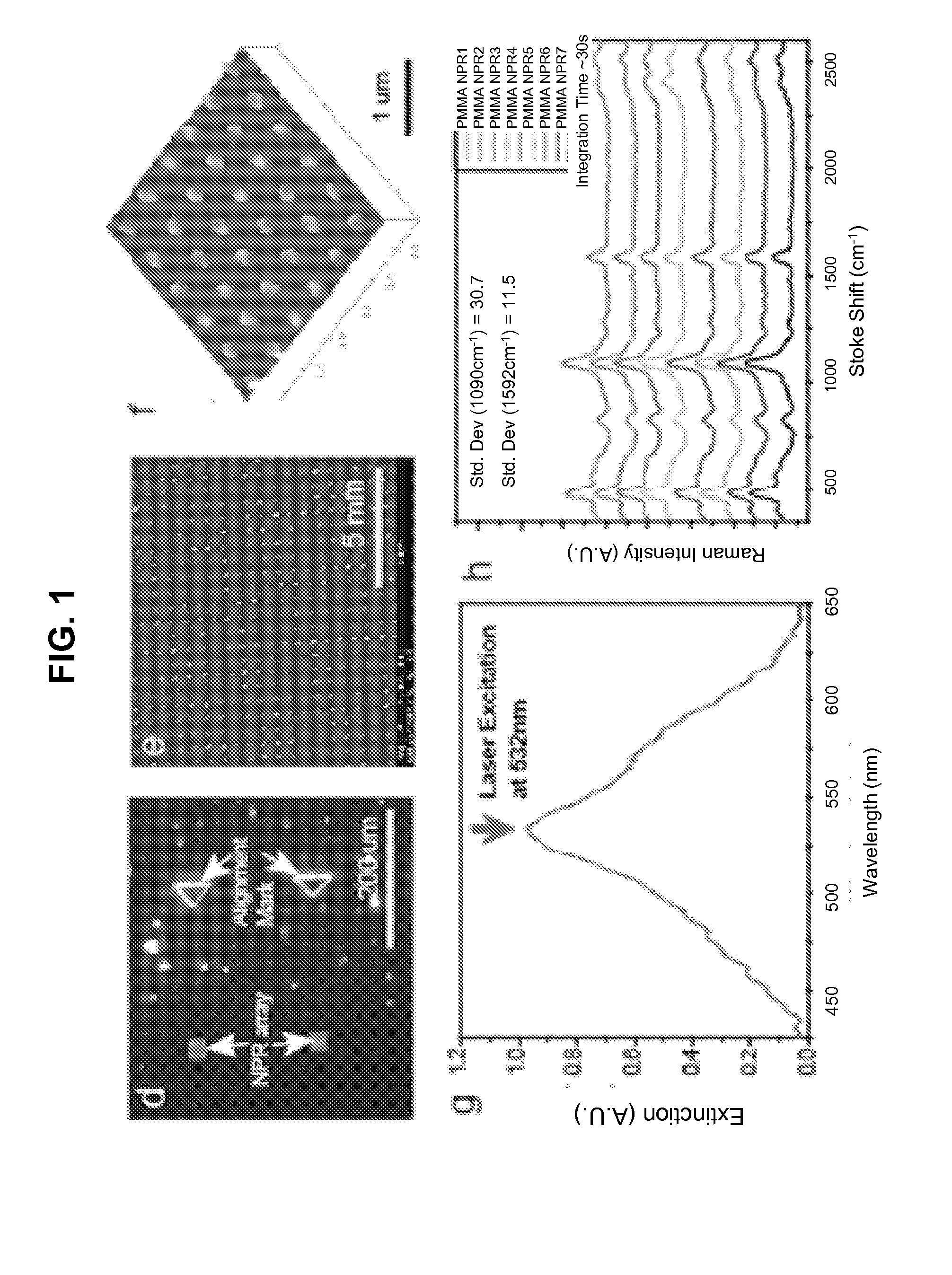Time resolved single-step protease activity quantification using nanoplasmonic resonator (NPR) sensor
a nanoplasmonic resonator and protease activity technology, applied in the field of surface enhanced raman scattering, can solve the problems of high false-positive rate, large anxiety, and expensive prostate needle biopsies for diagnosis and post-biopsy complications, and achieve sensitive single-step detection of enzymatic activity in extremely small volume, the effect of increasing the intensity of raman spectra
- Summary
- Abstract
- Description
- Claims
- Application Information
AI Technical Summary
Benefits of technology
Problems solved by technology
Method used
Image
Examples
example 1
Raman Enhancement Factor of a Single Tunable Nanoplasmonic Resonator (TNPR)
[0070]The TNPRs were patterned on quartz substrates (HOYA Co.) by electron beam lithography (EBL) (Leica Microsystems Nanowriter Series EBL 100). A 30 nm thick indium tin oxide (ITO) layer was first sputtered on the substrate to prevent charging effects during the EBL process. Poly(methyl methacrylate) (100 nm thick, MicroChem. Corp. PMMA) films, spincoated on the ITO-quartz glass, were used as a positive photoresist. After exposure, the patterns were developed using a 1:3 ratio of a methyl isobutyl ketone and isopropyl alcohol mixture, followed by multilayer electron beam evaporation of silver and oxide and standard lift-off procedures. We fabricated three-layered Ag / SiO2 / Ag and four-layered Ag / SiO2 / Ag / SiO2 TNPRs on the same substrate (we refer to the four-layered TNPR as the capped TNPR in this example), with each silver and SiO2 layer thickness fixed at 20 and 5 nm, respectively. A shadow mask was inserted...
example 2
Protease-Specific Substrate Peptide Conjugated Nprs for Real-Time Protease Detection and Measurement
[0078]In this work, NPRs (FIG. 1a) were conjugated with a PSA protease-specific substrate peptide, which has the sequence R19-HSSKLQLAAAC (SEQ ID NO:1) (S. R. Denmeade, C. M. Jakobsen, S. Janssen et al., J Natl Cancer Inst 95 (13), 990 (2003); S. R. Denmeade, W. Lou, J. Lovgren et al., Cancer Res 57 (21), 4924 (1997)), with the SERS molecule Rhodamine 19 (R19) at the N-terminus and cysteine at the C-terminus (FIG. 1b). The peptide has been identified as a highly specific peptides that can be cleaved by paPSA in vivo in xenografts models (S. R. Denmeade, C. M. Jakobsen, S. Janssen et al., J Natl Cancer Inst 95 (13), 990 (2003)) and human samples (P. Wu, U. H. Stenman, M. Pakkala et al., Prostate 58 (4), 345 (2004); P. Wu, L. Zhu, U. H. Stenman et al., Clin Chem 50 (1), 125 (2004)). The paPSA cleaves the peptide, leading to the release of the R19 moiety (FIG. 1c) and a subsequent decrea...
PUM
 Login to View More
Login to View More Abstract
Description
Claims
Application Information
 Login to View More
Login to View More - R&D
- Intellectual Property
- Life Sciences
- Materials
- Tech Scout
- Unparalleled Data Quality
- Higher Quality Content
- 60% Fewer Hallucinations
Browse by: Latest US Patents, China's latest patents, Technical Efficacy Thesaurus, Application Domain, Technology Topic, Popular Technical Reports.
© 2025 PatSnap. All rights reserved.Legal|Privacy policy|Modern Slavery Act Transparency Statement|Sitemap|About US| Contact US: help@patsnap.com



